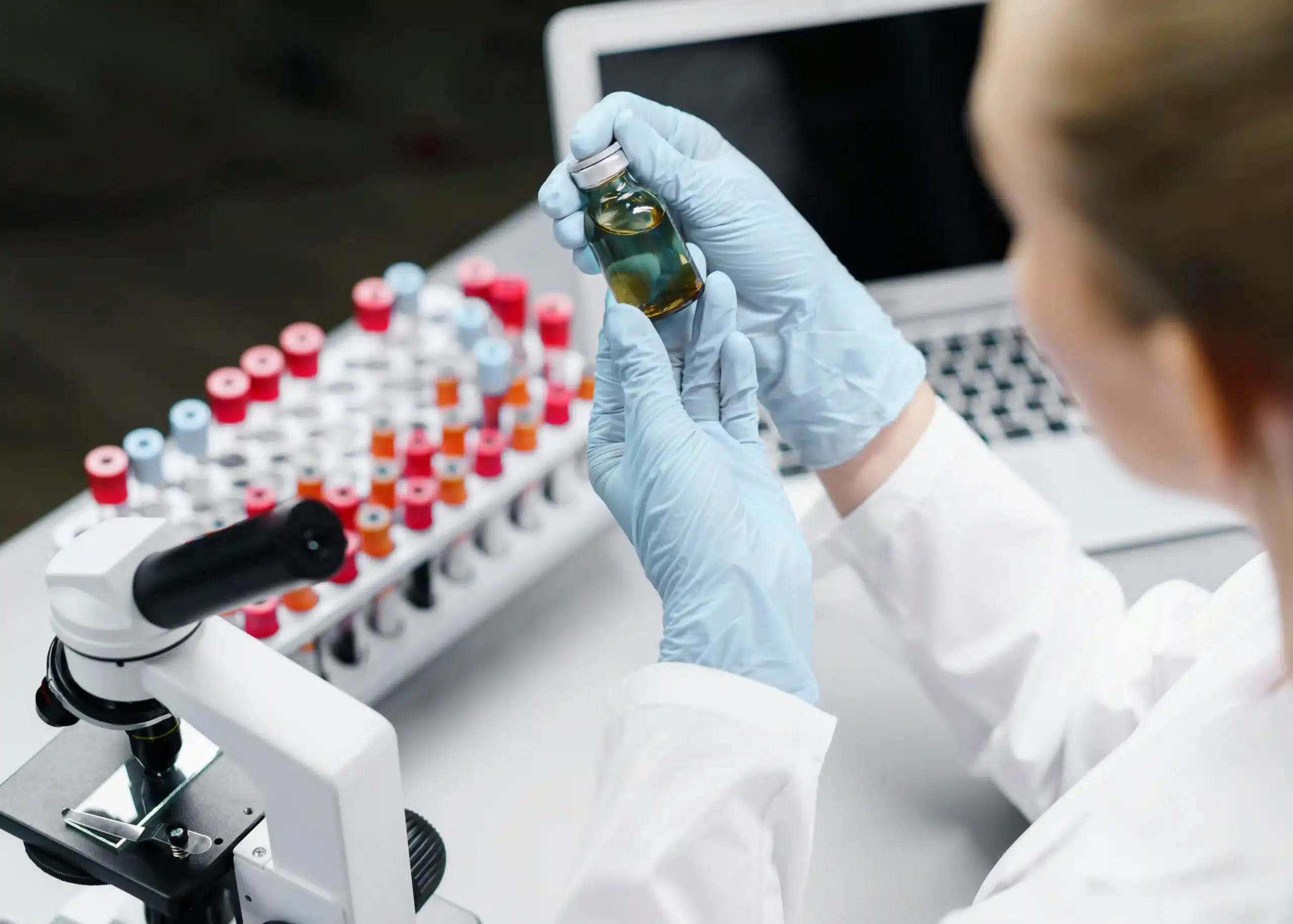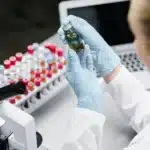
Individuals with chronic pain typically believe that they must choose between enduring it and using treatments that offer only temporary relief. There is ongoing research about how the body heals, and one promising finding is regenerative medicine. This newly established branch of medical science aims to encourage damaged tissues to repair and restore their functional potential. In this blog, we’ll explore what regenerative medicine is, the treatments it offers for chronic pain, and why it’s becoming a valuable alternative for lasting relief.
Understanding Chronic Pain
Chronic pain is a condition where discomfort in the body persists for three months or more without resolution. It can show up anywhere in the body and makes it difficult to perform everyday tasks. Beyond the physical challenges, living with constant pain often brings emotional difficulties, such as depression and anxiety.
Some of the most common examples of chronic pain are:
- Arthritis or joint pain
- Back pain, particularly in the lower back
- Cancer pain
- Fibromyalgia
- Headaches and migraines
- Neck pain
- Nerve pain
What Is Regenerative Medicine?
Regenerative medicine is a treatment approach that helps the body repair damaged tissues by enhancing its natural healing capabilities. Treatment methods include delivering stem cells, platelet-rich plasma, or other materials to the injured areas, allowing them to rebuild and function properly again. For many patients, this field offers a way to repair the underlying tissue damage that causes discomfort, rather than only managing pain symptoms with medication.
Types of Regenerative Medicine Treatments for Pain
Regenerative medicine has received FDA approval for various wound healing and orthopedic applications over the past few decades. Three primary treatment approaches exist within this field.
1. Stem Cell Therapy
Stem cell therapy uses mesenchymal stem cells collected from your own body or a donor, specifically from the bone marrow or fat tissue, and injects them into the injured tissue to help repair it. These cells can develop into the specific types of tissue that the body needs for healing, including cartilage, bone, tendons, and ligaments.
2. Platelet-Rich Plasma (PRP) Therapy
PRP therapy uses healing substances found in the blood to promote tissue repair. A blood sample is drawn and then spun in a centrifuge to isolate the platelets, creating a solution with a much higher concentration of platelets than normal blood. Platelets contain growth factors that help rebuild tissue and reduce swelling. The concentrated solution is injected into the injured area to activate healing.
3. Prolotherapy
Prolotherapy involves injecting a dextrose solution into damaged joints or weakened connective tissues. The injection causes a mild irritation that triggers the body’s healing response. Repair cells are drawn to the injection site, where they begin producing new tissue and reinforcing weak structures. The treatment is particularly beneficial for chronic conditions such as arthritis, chronic tendon pain, and plantar fasciitis.
How Regenerative Medicine Helps With Chronic Pain
Below are the primary ways regenerative treatments work to ease persistent discomfort and restore normal function.
1. Stimulating Natural Healing Processes
Regenerative therapies amplify the body’s built-in repair mechanisms. These treatments concentrate these healing elements and deliver them directly to the site of damage, jumpstarting the recovery process.
2. Reducing Inflammation and Pain Levels
Ongoing inflammation keeps pain present by irritating tissues and blocking the healing process. Regenerative treatments introduce specialized cells that work to settle the inflammatory response while initiating tissue repair.
3. Repairing or Replacing Damaged Tissues
Regenerative therapies have the remarkable ability to rebuild structures damaged by injury or wear. The cells used can develop into the type of tissue required at the treatment location, becoming cartilage for damaged joints, new fibers for torn tendons, or fresh tissue for injured muscles.
4. Enhancing Mobility and Quality of Life
When regenerative medicine successfully restores tissues and eases discomfort, patients experience noticeable improvements in their mobility. These improvements enable individuals to get back to everyday tasks and activities that were previously challenging.
Conditions That Can Benefit From Regenerative Medicine
Regenerative medicine provides hope for patients dealing with various painful and degenerative conditions. The following are some examples of conditions that can benefit from these treatments.
1. Osteoarthritis
Osteoarthritis occurs when the cartilage cushioning joints gradually wears away. Regenerative therapies help stimulate the growth of new cartilage while reducing joint inflammation, which can help alleviate pain and improve mobility.
2. Sports Injuries
Muscle tears, ligament damage, and tendonitis are common setbacks for athletes. Regenerative therapies deliver concentrated growth factors to the affected areas, accelerating tissue repair and helping athletes return to sports sooner.
3. Back and Spinal Pain
Chronic back pain often results from deteriorating disks, pinched nerves, or damaged tissues along the spine. Regenerative medicine addresses the source of this problem by encouraging damaged disk tissue to repair itself. These treatments also reduce inflammation around compressed nerves, potentially eliminating the need for surgery.
4. Tendon and Ligament Injuries
Tendons and ligaments heal slowly because they receive a limited blood supply. Regenerative approaches boost the repair process by stimulating collagen production at injury sites, helping conditions such as rotator cuff tears and ACL injuries heal more effectively.
5. Neuropathic Pain
Nerve damage creates unusual sensations, including burning, tingling, or sharp, shooting pain. Regenerative treatments help repair damaged nerve fibers and restore their protective coating. By also reducing inflammatory responses around injured nerves, these treatments are used to manage diabetic neuropathy, surgical nerve complications, and trauma-related nerve disorders.
Benefits of Regenerative Medicine for Pain Relief
Below are the main benefits that regenerative medicine offers to those who experience chronic pain:
1. Minimally Invasive Procedures
Regenerative treatments usually involve small injections rather than major surgery. Because there are no large cuts or stitches involved, patients typically experience fewer complications and can return to their daily lives much sooner.
2. Reduced Reliance on Opioids and Medications
Traditional pain management tends to depend on medications that only mask discomfort without curing the underlying cause. Regenerative treatments take a different approach by repairing the damaged structures that cause the pain in the first place. When these underlying problems improve, patients need less medication, helping them avoid the risks of prolonged painkiller use.
3. Potential Long-Term Relief
These treatments aim to produce lasting results by encouraging the body to heal itself from within. Through natural healing responses, damaged structures can gradually rebuild and regain strength. Patients often experience continued pain reduction long after their initial treatment sessions have ended.
4. Lower Recovery Time Compared to Surgery
Surgical procedures often require weeks or months of downtime because the body must heal from both the operation and the injury. However, regenerative options eliminate this double burden by avoiding surgical cuts entirely. Most patients require only a brief rest period and can return to their normal activities within one to two weeks.
Risks and Considerations
The following are essential considerations to understand before pursuing regenerative therapies.
1. Safety and FDA Regulations
The FDA has implemented stringent regulations to ensure regenerative treatments meet safety standards before making them available to patients. Despite these restrictions, some clinics advertise unapproved regenerative medicine products, such as stem cell therapy. Patients who receive these unauthorized therapies face serious risks, including tumor formation, blindness, severe infections, and harmful immune responses.
2. Possible Side Effects
Most patients tolerate regenerative treatments well, although some minor reactions might occur at the injection site. Common effects include temporary swelling, mild soreness that typically subsides within two days, and bruising if small blood vessels are affected. Some individuals may also experience brief systemic responses, such as low-grade fever, fatigue, or mild headaches, as their body adjusts to the therapy. Rare but serious side effects include infection, allergic reactions, joint bleeding, and nerve damage.
3. Ideal Candidate Considerations
Regenerative medicine is most beneficial for individuals with joint pain, tendon inflammation, cartilage breakdown, or minor ligament tears that haven’t improved with traditional methods. Patients who have tried physical therapy, rest, anti-inflammatory medications, and steroid injections without success often turn to regenerative medicine as their next best option. Those looking to avoid surgery due to long recovery times, previous unsuccessful operations, or medical conditions that make them unsuitable candidates for surgery often explore regenerative medicine as well. However, proper evaluation is important to confirm that the treatment is right for the specific condition.
What to Expect During Treatment and Recovery
If you’re considering regenerative medicine for relieving chronic pain, the following is a description of the main stages that can typically be expected.
1. Initial Consultation and Diagnosis
The treatment process begins with a detailed medical assessment, during which your provider takes the time to understand your condition. During this visit, you’ll discuss your health history, including the duration of your painful symptoms, and which activities exacerbate or alleviate them. Your doctor may request imaging scans or blood tests to identify the cause of your discomfort.
2. Procedure
The regenerative treatment takes place in an outpatient clinic, so you won’t need to stay overnight in a hospital. Your specialist injects healing materials, such as platelet-rich plasma or cellular concentrates, directly into the damaged area using imaging guidance for accuracy.
3. Recovery and Follow-Up Care
Some soreness around the treatment area is normal immediately after the procedure, but it usually disappears within a few days. Significant improvements in how you feel and move emerge gradually as your body begins to heal damaged tissue over the next several weeks to months. Your provider will arrange follow-up appointments to track your recovery, address any concerns you have, and confirm that the treatment is working effectively.
Future of Regenerative Medicine in Pain Management
Regenerative medicine is revolutionizing pain management by addressing the underlying causes of pain rather than merely suppressing symptoms. This treatment is headed in a number of directions, including the following areas.
1. Advances in Clinical Research
Clinical researchers are making steady progress in finding new treatments to repair tissues that cause chronic pain conditions. Scientists are testing therapies that use the body’s own cells and growth factors to repair damaged joints, nerves, and spinal tissue. As these methods improve, patients may experience relief that lasts much longer without needing frequent appointments or ongoing medication use.
2. Potential for Personalized Treatments
No two patients experience pain in exactly the same way, which is why customized care is becoming increasingly important. Doctors can now analyze a person’s unique condition and create treatment plans specifically matched to their needs.
3. Integration With Conventional Therapies
Regenerative medicine works best when combined with established treatments, such as physical therapy and wellness practices. As researchers utilize advanced technologies such as 3D bioprinting and nanotechnology, they can develop more precise methods to repair damaged tissues. These integrated methods are being studied to confirm their safety and effectiveness for clinical use.
Frequently Asked Questions (FAQs)
How effective is regenerative medicine for chronic pain?
Regenerative treatments encourage your body to heal damaged areas naturally, which may provide relief without relying on medications or surgical options, although results vary based on the patient’s individual circumstances.
Is regenerative medicine safe for all patients?
Regenerative medicine may result in rare but serious side effects, such as infections or adverse reactions. Safety also becomes a significant concern with practitioners who lack proper credentials. Some patients should not consider these options at all, including those fighting off infections, struggling with immune system disorders, or facing blood-related health issues.
How long does it take to see results?
You can expect to see initial improvements a few weeks after treatment, with full benefits typically developing over several months to a year.
Does insurance cover regenerative medicine treatments?
Insurance companies typically do not pay for these procedures because they’re considered to be experimental, although some plans may make exceptions.
Are regenerative therapies a permanent solution?
Regenerative therapies aim to achieve lasting results by addressing the root cause of tissue damage, rather than merely temporarily relieving symptoms. However, permanence isn’t guaranteed since outcomes depend on your body’s healing ability and overall health.
Can regenerative medicine be combined with physical therapy or medication to enhance its effectiveness?
Yes, combining regenerative medicine with physical therapy and medication often maximizes outcomes by ensuring proper healing and controlling inflammation.






